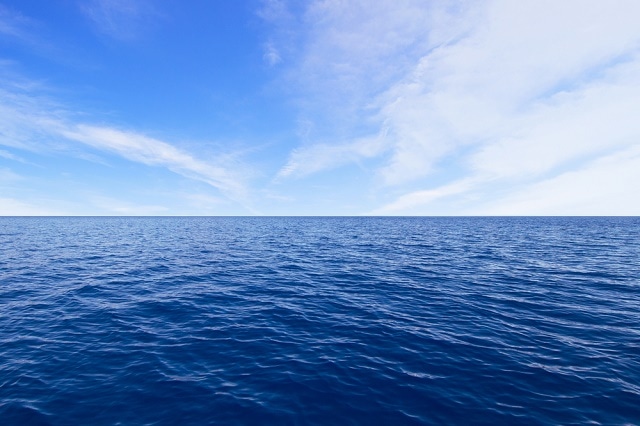May 26 2016
Oceans generally seem to look like a mass of water standing all alone like a separate entity. Despite this assumption, it should be noted that oceans spread all over the world are made up of layers with varied densities, referred to as stratifications, comprising complex fluid dynamics.
 Image Credit: TouchingPixel | Shutterstock.com
Image Credit: TouchingPixel | Shutterstock.com
Mode-2 internal waves or bulges often develop in the thickness of all these layers and trap materials inside that tend to flow along with the wave. Two mathematicians at Canada's University of Waterloo have for the very first time developed a 3D simulation of the mass transport capabilities of mode-2 waves. These models will help to explain how mode-2 waves are capable of carrying materials that are either detrimental (like crude oil and other such contaminants) or beneficial (like phytoplankton and other varieties of food sources) between ecosystems.
A description of the simulation features in Physics of Fluids, from AIP Publishing.
The researchers, in their simulation’s physical analog, developed a stratification by introducing fluids of varied densities behind a physical gate. A stratification exists after a mild blending of the fluids. This stratification contains dense water stagnated below a layer of water that is less dense. At times, a double pycnocline, which is a third thin layer comprising medium density, is caught between the other two.
When the fluid behind the gate is mixed and then the gate is removed, the mixed fluid collapses into the stratification because it is both heavier than the top layer and lighter than the bottom one. Adding dye to the mixed fluid while the gate is in place simulates the material we want the mode-2 waves -- the bulges in the pycnocline formed once the gate is taken away -- to transport. We can then measure the size of the wave, how much dye remains trapped within it, and how well the wave carries its captured material.
David Deepwell, Graduate Student, University of Waterloo
Deepwell along with his supervisor, mathematician Marek Stastna, discovered that a larger bulge allows the mode-2 internal wave to carry more material. They also found that small regions of turbulence, known as lee instabilities, are capable of being formed behind the wave, and that these regions can also induce breaking down the wave.
We believe what happens is that a vorticity dipole -- two vortices close together and spinning in opposite directions -- leads to these lee instabilities, because it forces some heavy fluid to go above the lighter fluid, which is the reverse of the condition that forms the mode-2 internal wave in the first place.
David Deepwell, Graduate Student, University of Waterloo
An optimal scenario was discovered by Deepwell and Stastna. In this scenario, the mode-2 internal wave continues to exist and then allows the material to flow as long as possible, and the researchers also detected the properties of a particular wave that they earlier dubbed the Pac-Man.
"When [a Pac-Man] forms, the dye takes on the shape of the arcade game character," Deepwell said.
The researchers, having analyzed the interior of the mode-2 internal wave, now plan to study the breaking down of the whole wave.
"We will examine how the energy of the wave is deposited when it is destroyed," Deepwell said.